Every summer at a stately Tudor Revival home in Madison, Wisconsin, the house manager created magnificent gardens and container arrangements that filled the property with color, scent and flavor.
Every winter his work succumbed to the fierce cold, and he started over again in the spring.
After a few such cycles, the homeowner began dreaming of a greenhouse to preserve tender blooms and extend the Midwestern growing season. Seven years ago she moved into the home, which she shares with her fiancé and a trio of beloved dogs. She’s an accomplished cook who loves to entertain and frequently infuses her recipes with the gardens’ edible bounty.
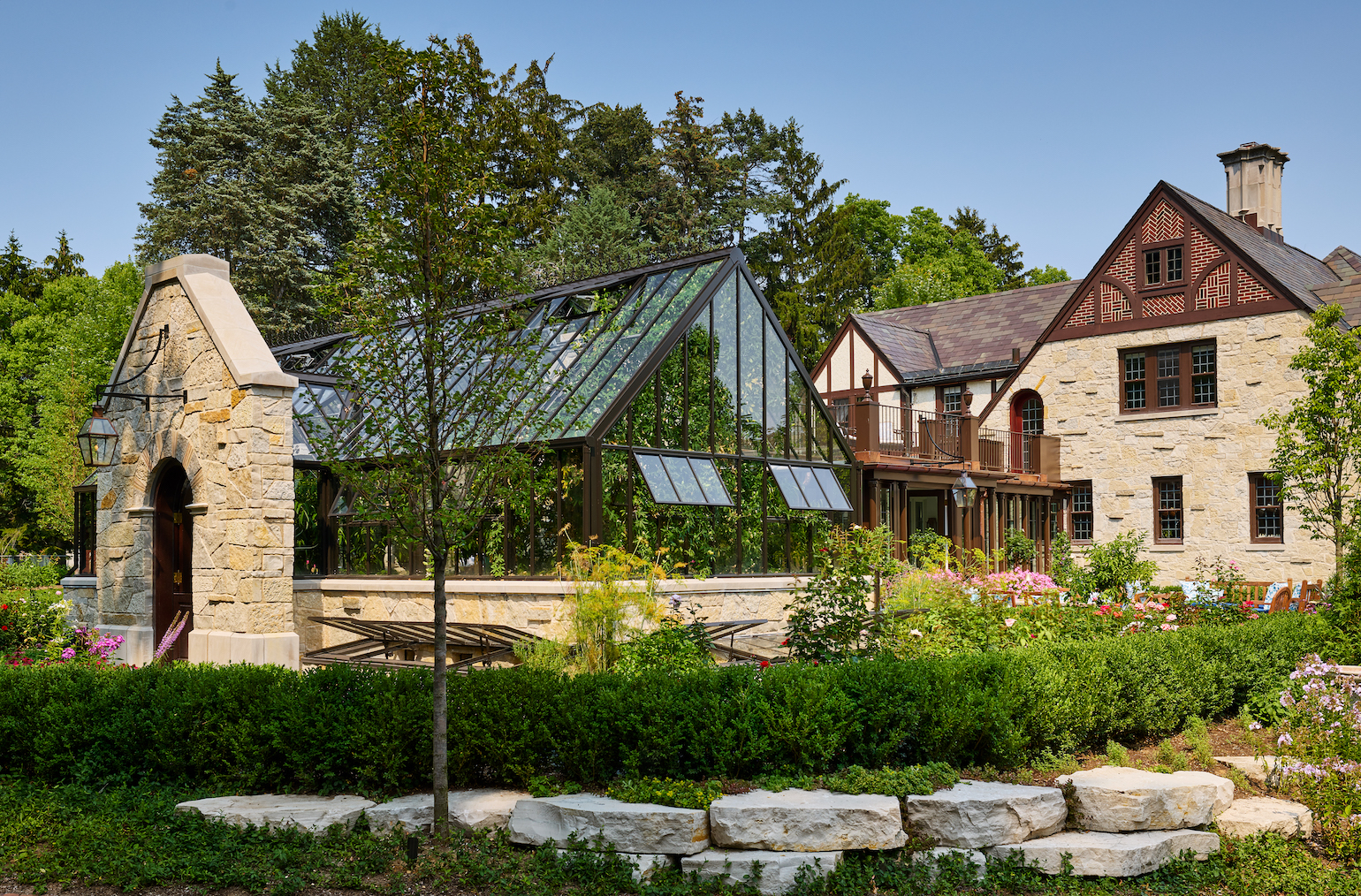
Research led her to Hartley Botanic, a manufacturer of handcrafted bespoke greenhouses based in a rural town near Manchester. The company has produced distinctive, award-winning greenhouses around the world since 1938. While she was in Europe on business, the homeowner visited the factory and was enthralled.
An Architect’s Connected Approach
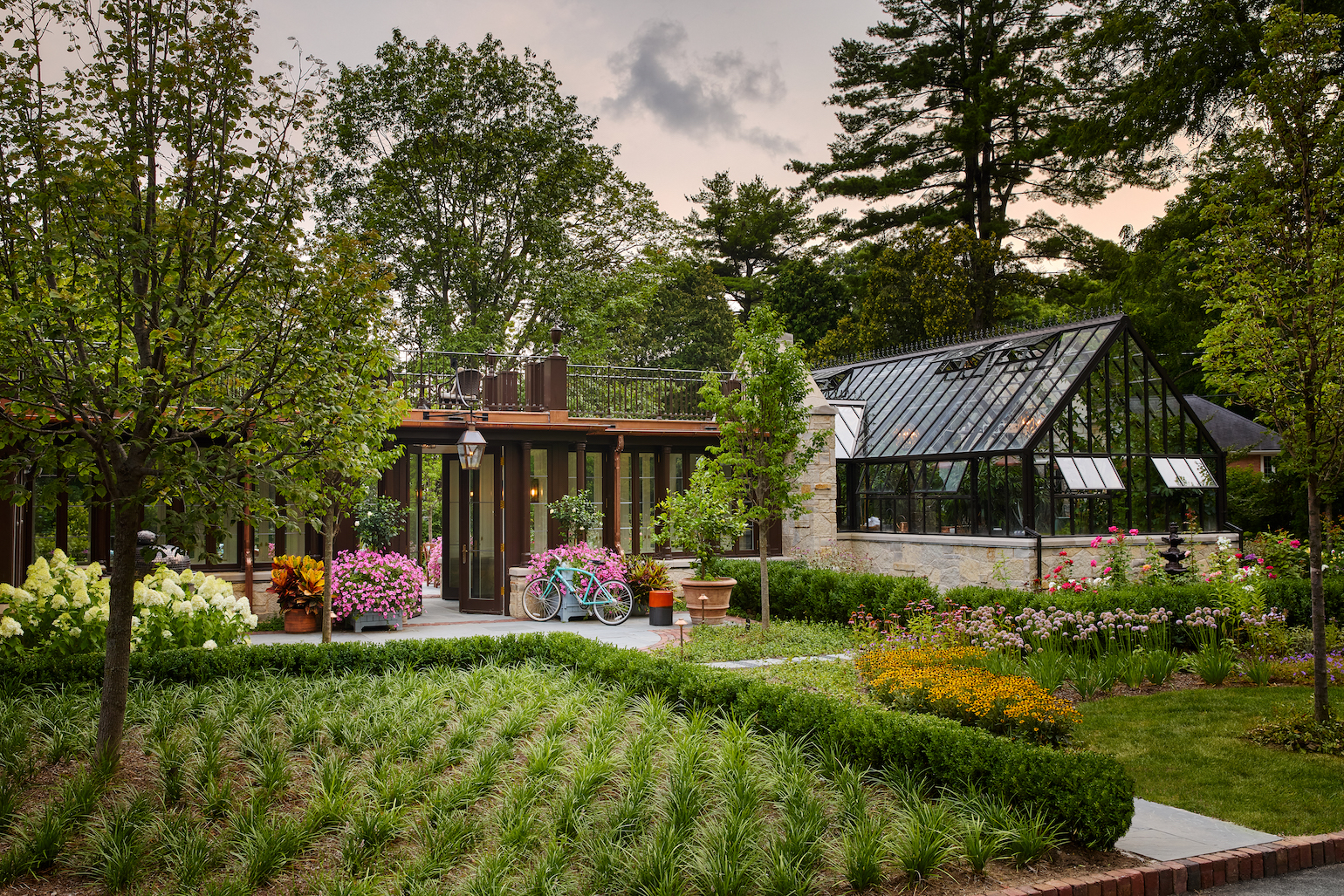
Before settling on a particular model, she wondered about the best place to put the structure. She wanted to easily access the greenhouse from the main house, to avoid traipsing back and forth in all sorts of weather. She initially thought the best spot was at the back of the attached pool house.
She took her ideas to Wade Weissmann Architecture, a firm that’s specialized in designing classically inspired estates for the last 25 years (see Weissmann’s 2018 monograph, “Heirloom Homes: The Architecture of Wade Weissmann”). The company is primarily based in Milwaukee, with additional offices in Santa Barbara and Pittsburgh.
The homeowner requested a master plan that would integrate the two structures and marry the greenhouse to the character and aesthetics of the home.
“She made it very clear from the start she intended to use it as a functional greenhouse, not just a quote-unquote ‘lifestyle’ greenhouse,” says Tyler Blake, the senior design associate on the project. “She was going to grow amazing citrus trees and herbs to use in her cooking.”
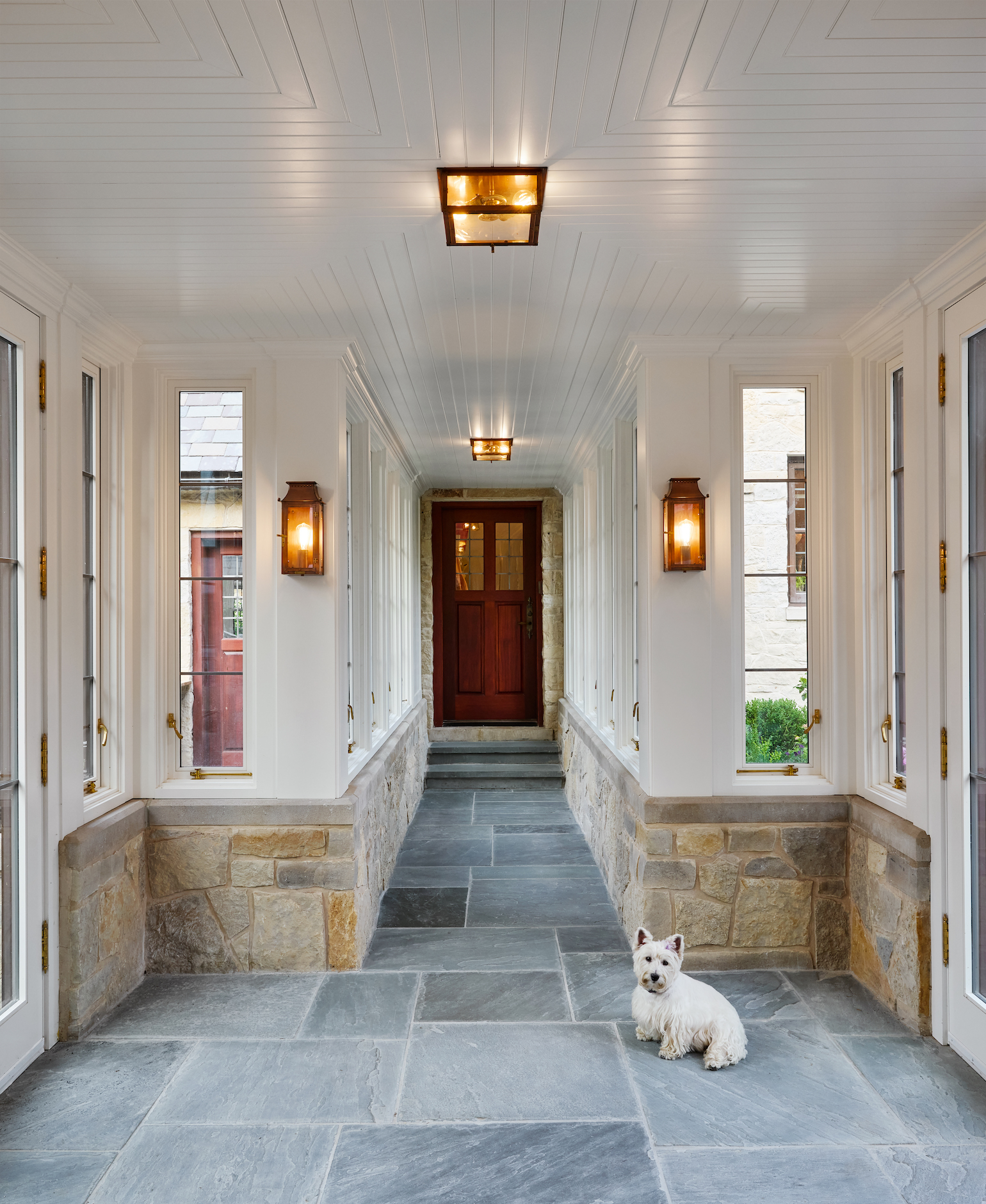
The architects, led by Blake, proposed locating the greenhouse on one side of the residence and connecting it to the house with an enclosed breezeway. The breezeway could be entered from an existing exterior door in the kitchen.
“We agreed to the plan wholeheartedly,” the homeowner says. “It exceeded our expectations of what we could do with it. It really was a dream working with the architects.”
An Elevated Seating Area
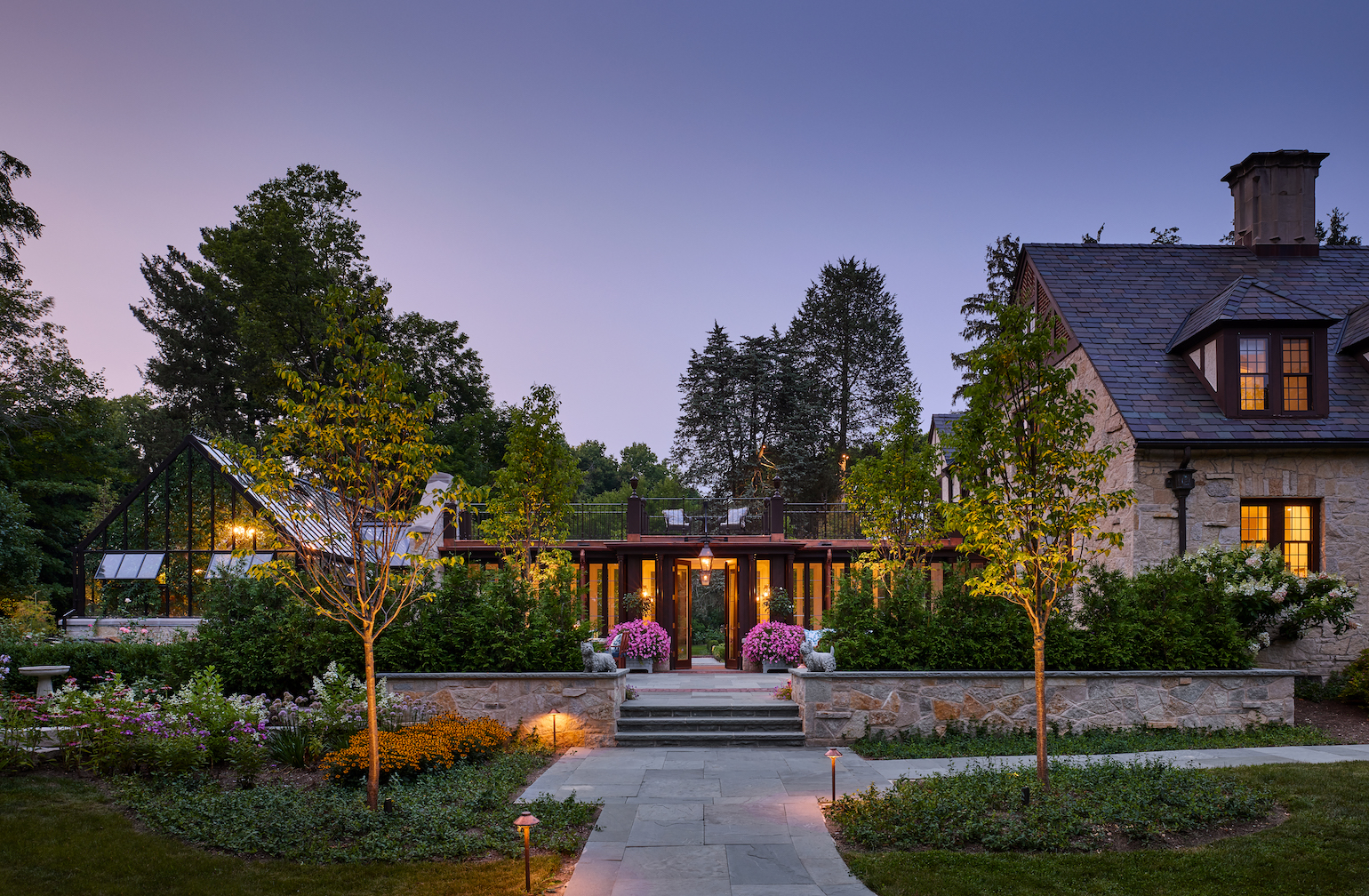
The design lent both drama and function to another architectural feature—a sweet but mostly decorative Juliet balcony in a second-floor hallway above the kitchen. (“A really pretty door that led to nowhere,” as the homeowner put it.) The breezeway’s flat rooftop was enclosed with ornate fencing to create a private, elevated, walk-out seating area.
A Victorian ‘Glasshouse’
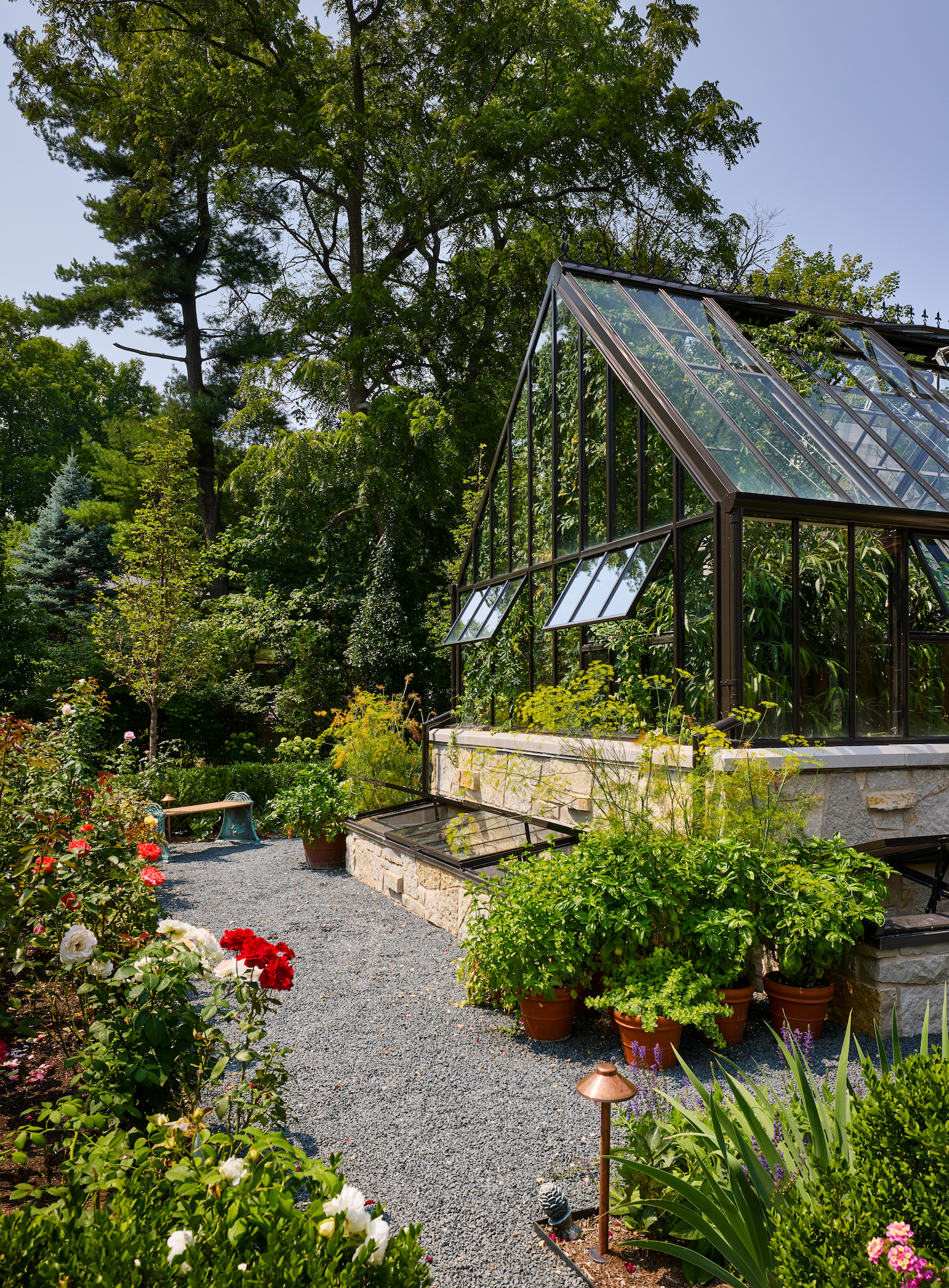
A Victorian greenhouse, or glasshouse, is characterized by a high peaked roof, a glazed metal framework and a gable end door. The style also includes decorative elements such as cresting and finials. Hartley offers an array of customizable greenhouses that are shipped in pieces and then professionally assembled.
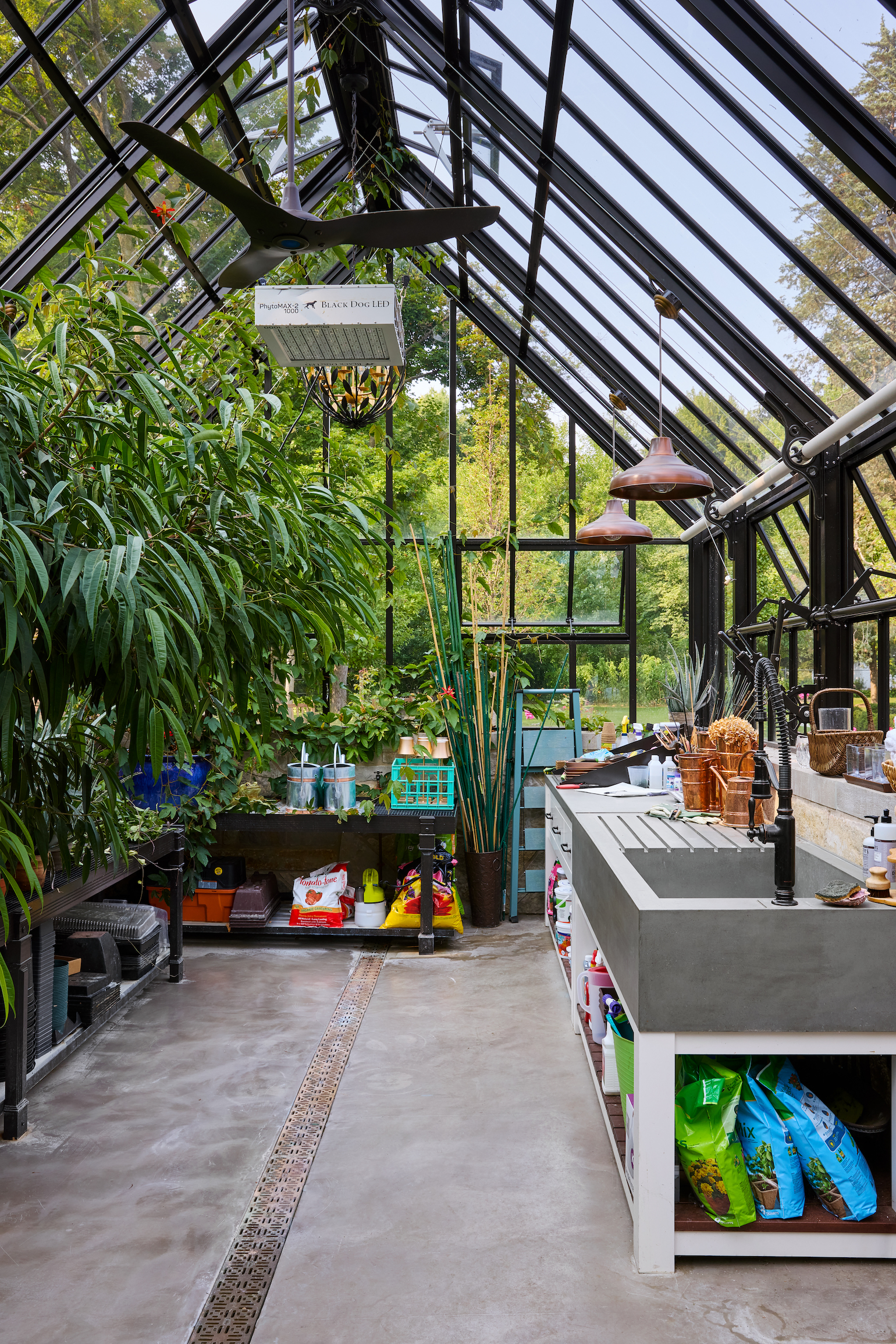
The homeowner selected the company’s largest model, the Victorian Grand Manor Greenhouse. It measures about 13 feet wide by 37 feet long and 14 feet high. The aluminum framework is dark bronze, coordinated with the home’s exterior trim and moldings.
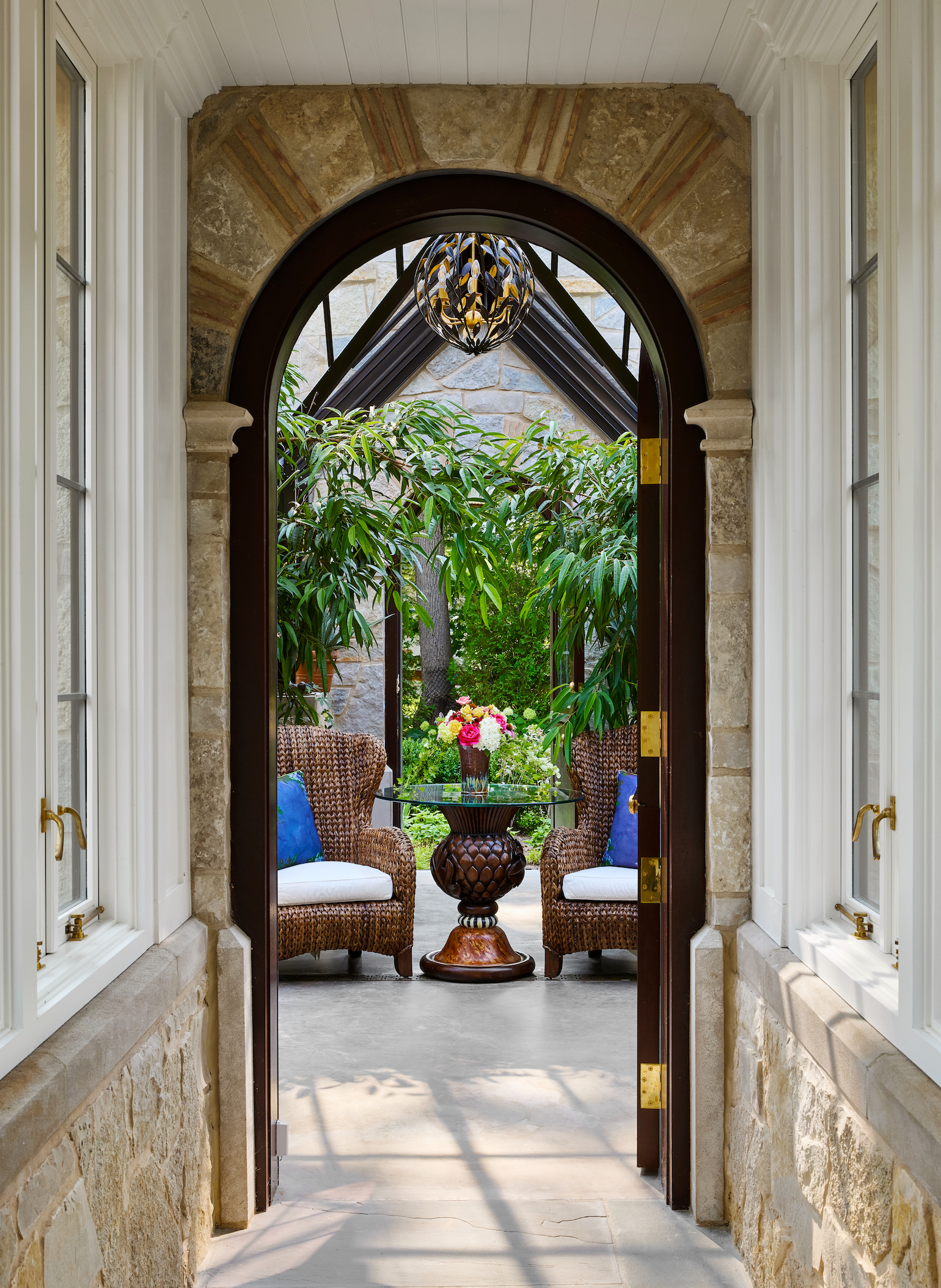
She added optional cold frames to get a seasonal jump on sowing seeds, and ornamental roof crestings. The architects worked with Hartley Botanical on modifications such as window and door placement. The greenhouse was assembled on-site by a Hartley Botanic crew.
The Grandeur of Stone
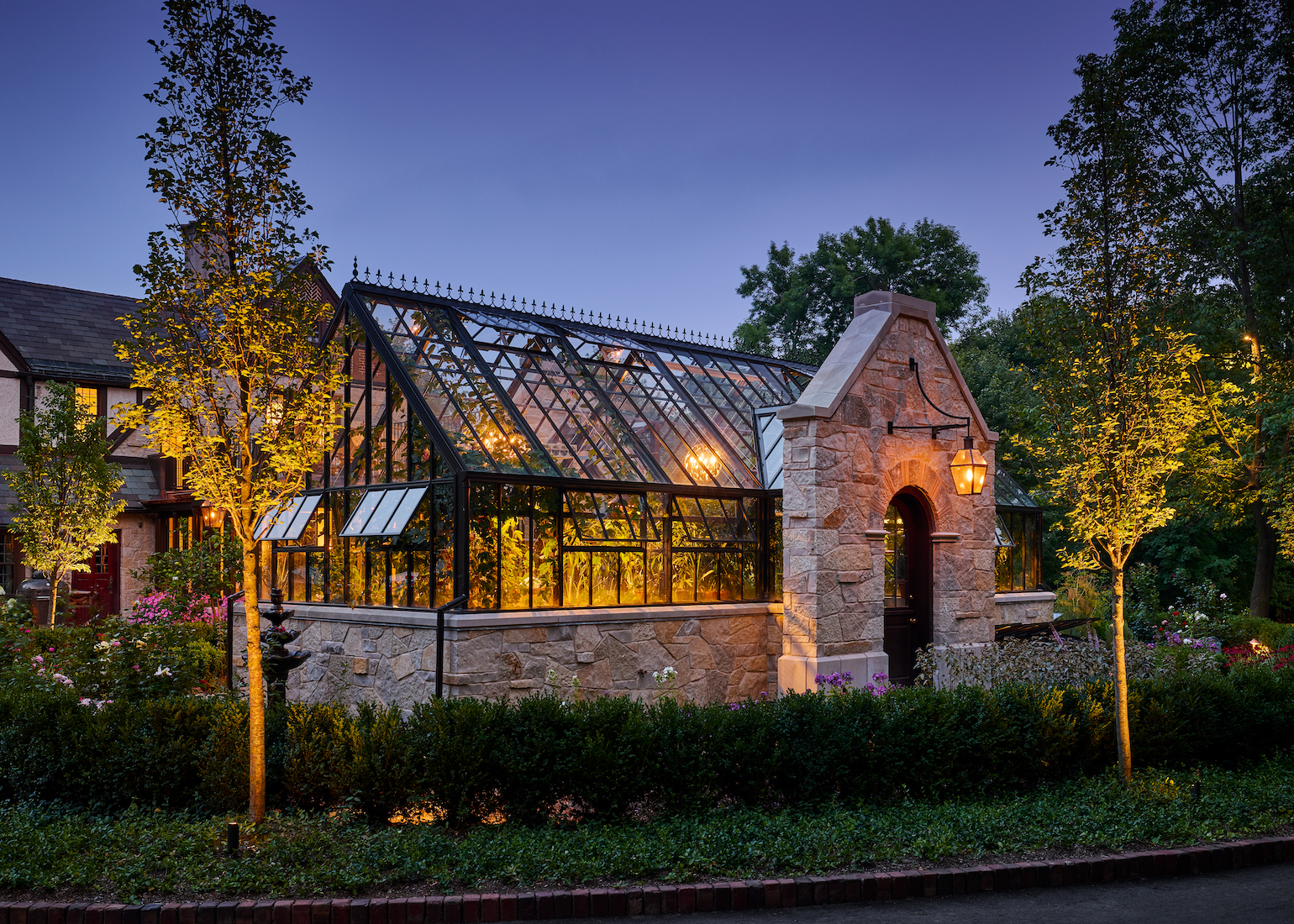
With general contractor Jorndt Fahey of Williams Bay, Wisconsin, executing the design, the greenhouse and breezeway sit perpendicular to each other. They are circled by low stone side walls that replicate the home’s facade. Stone parapet walls encase the arched front and back doorways, adding yet another element of grandeur.
The Patios and Gardens
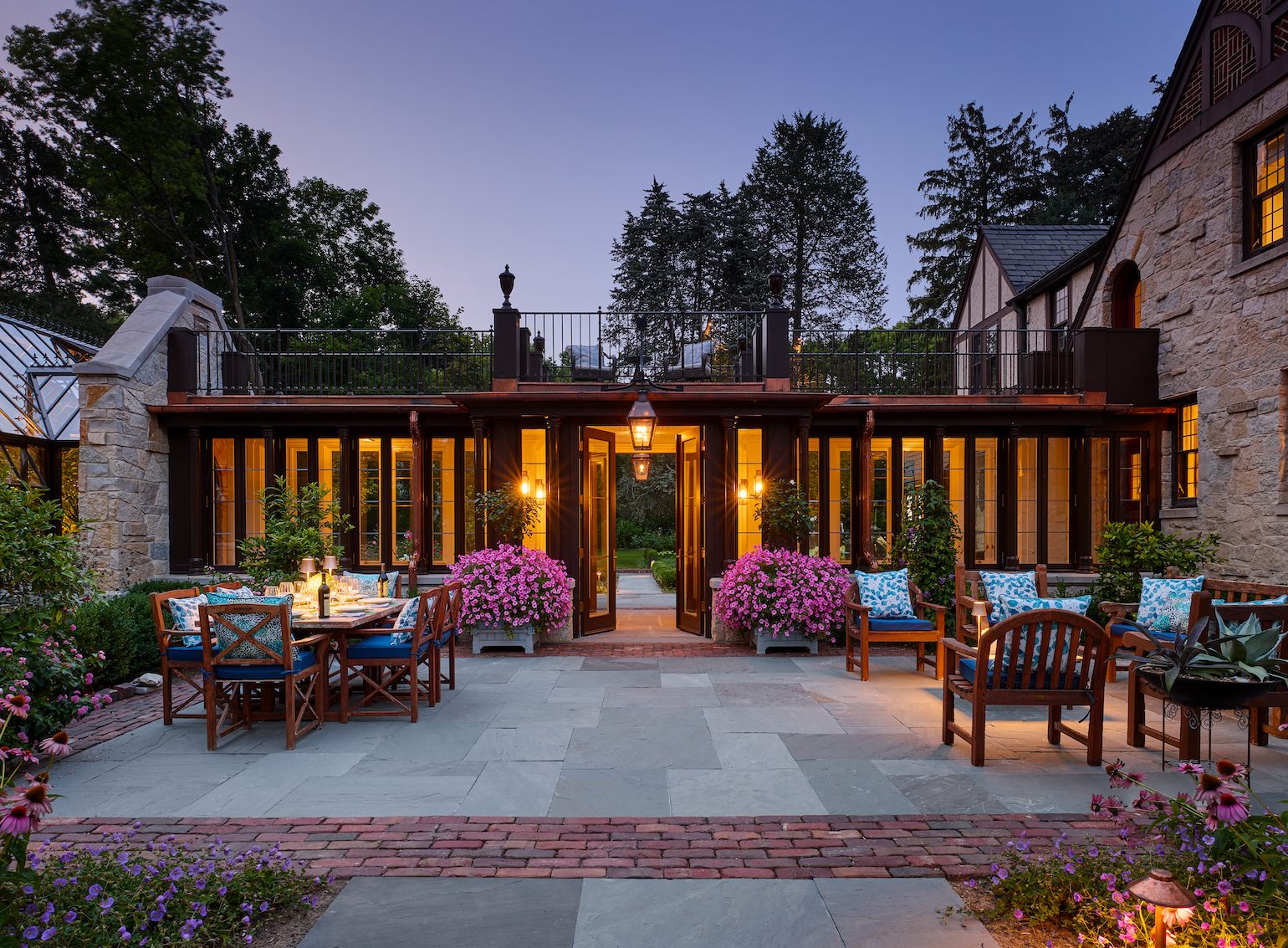
On both sides of the breezeway are a patio and gardens with landscaping and hardscaping design by Scott Byron & Co. of Lake Bluff, Illinois. The patio surfaces are primarily bluestone, accented with red brick borders. The bluestone continues inside the breezeway, which has double doors opening to the front and back patios. The homeowner furnished the outdoor lounging and dining spaces with teak woods and marine-blue textiles.
“The greatest fun was working with the homeowner,” Blake says. “She had her own ideas but was open to ours and eager to hear what we thought. There was a lot of collaboration all the way around.”
Garden Bounty All Year
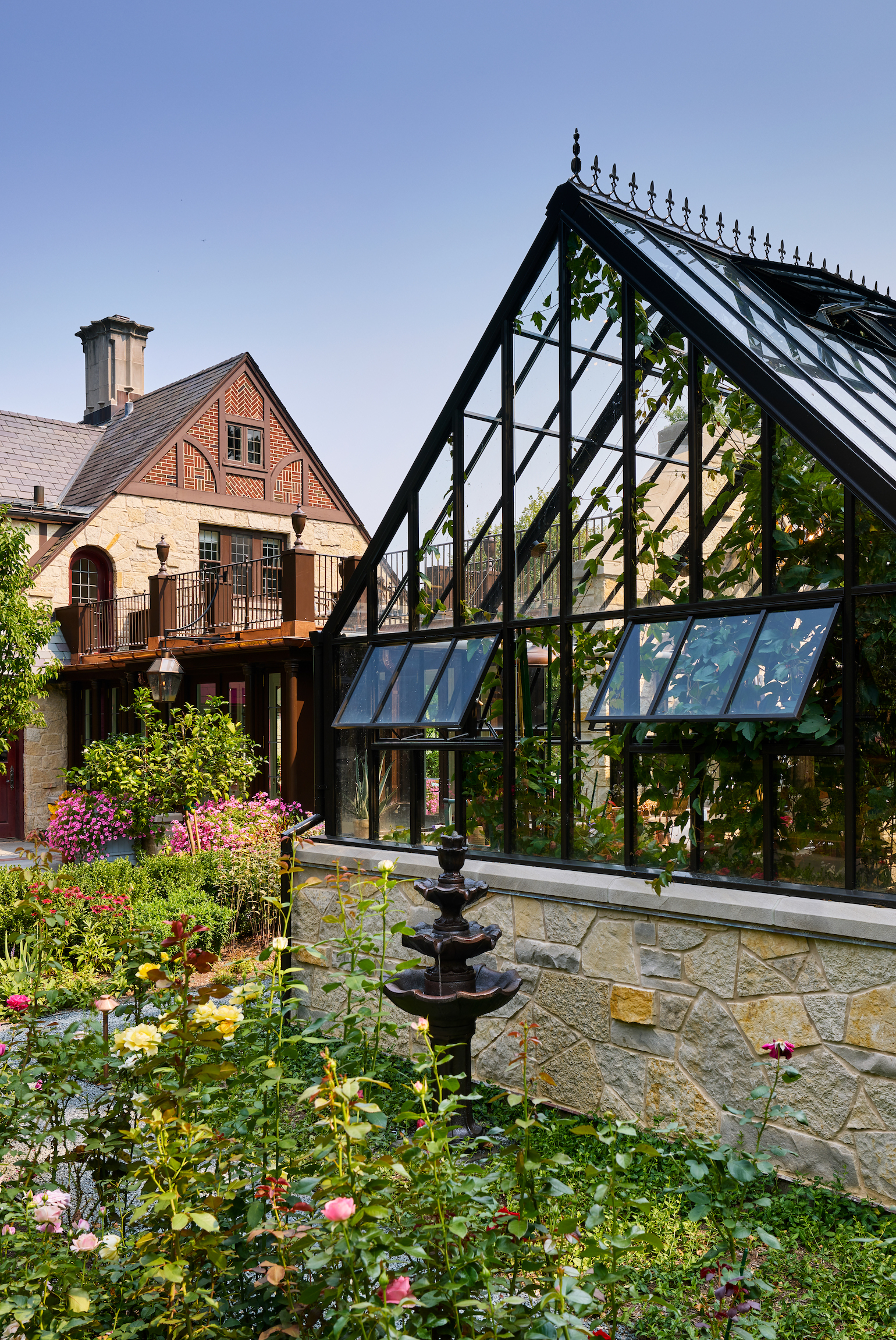
The greenhouse today is a verdant oasis where lush flora thrives year-round. Among the many species are orchids, dahlias, elephant ears, weeping figs, kumquats and mandarin orange trees, sprawling passion flowers and fixings for sauces and salads.
The first winter yielded enough heirloom tomatoes for the homeowner to can 32 quart-sized jars of pasta sauce. “They were just the most delicious tomatoes I’ve ever had,” she says.
Would she do anything differently the next time? “Yes, I wish we made the greenhouse twice as big,” she says.
This article originally appeared on spacesmag.com.
How to Help:
If you’re interested in helping more people have access to design services, you can support the nonprofit Designs for Dignity, which transforms nonprofit environments through pro bono design services and in-kind donations.
More from Better:
- 5 Trendsetting Sustainable Furniture Pieces From Roche Bobois, Sabai and More
- How to Pay Off Your Mortgage Faster, According to Experts
- Designing a Home for Working, Studying and Playing at Home: How to Create Multifunctional Spaces

Pamela Dittmer McKuen is an award-winning Chicago-based freelance features journalist who specializes in home, design and travel. She has dual passions for dark chocolate and cats. She’s an ardent supporter of Bridge Communities, a nonprofit that helps homeless families transition to self-sufficiency, and Feral Fixers, a trap-neuter-release and cat adoption agency.
